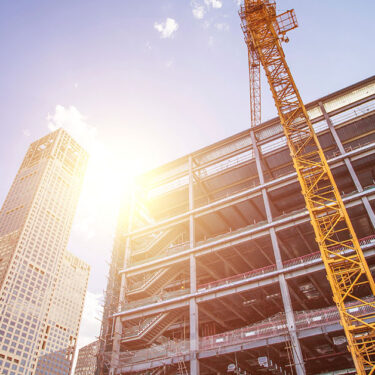As cranes and scaffolding dominate skylines in major cities across the U.S., it is clear that the construction industry is bustling in many areas. To learn how Construction Insurance helps protect construction companies, Crain’s Content Studio spoke with Nicholas Freeman, Associate Managing Director, Broker, Casualty, Burns & Wilcox Brokerage, North Dallas, Texas.
What are the greatest risks in the construction industry today?
N.F.: In general, the cost of doing business. What I mean by that is the increased costs of materials, supplies, labor, and claims. It is more expensive now to do business than it was several years ago. The pandemic has had an impact on that as far as costs and finding employees, but it is also the legal climate in a number of states when it comes to judgments and the cost of legal defense. Those are all very pressing concerns for business owners that impact them on a daily basis.
What should companies be aware of relative to these risks?
N.F.: As far as the cost of claims and resulting court judgments, construction companies can take steps to mitigate their risks. They cannot fully get away from it but I would suggest making sure that their risk management and safety procedures are updated to make the workplace as safe as humanly possible and to reduce the number of accidents. This includes training their employees and following Occupational Safety and Health Administration (OSHA) guidelines. They should also make sure that they are requiring the proper insurance coverages of their independent contractors along with indemnification wording in their contracts. That way, if there is an accident or claim involving one of those independent contractors, they are essentially protecting themselves and pushing the claim to the proper party.
Which insurance policies can help them respond to these threats?
N.F.: Important policies include Commercial General Liability (CGL) Insurance, Auto Liability Insurance, Workers’ Compensation Insurance, and Excess Liability Insurance. The CGL Insurance is responsible for covering third-party bodily injury and property damage, and the Excess Liability Insurance sits on top of that and provides increased limits. Auto Liability Insurance is for the vehicles they are using in their daily course of business, Workers’ Compensation Insurance is for worksite injuries and the employer liability portion of that, and Excess Liability Insurance can sit over top of those as well. Construction companies will want to pay attention to what is in their policies — not every CGL Insurance policy is written the same. Look out for anything pertaining to independent contractors, which could come in the form of various bodily injury exclusions or property damage exclusions for work done by subcontractors, and any sort of limitations for work done at a height, or for earth movement. From a contractual standpoint, you also want to make sure the policy meets the contractual obligations of the party hiring them or financing the project.
Can you provide an example of a scenario you have dealt with that would be illustrative of the risks we have been discussing?
N.F.: A number of years ago, we wrote the CGL Insurance and Excess Liability Insurance coverage for a home builder of a new residential development. One weekend, they had a subcontractor going back out to finish some work. The subcontractor was not expected on the job site that particular day, but he was walking through the development with a tall ladder that hit a power line and he suffered severe bodily injuries. The claim paid out multi-million dollars. From a safety standpoint, they had two main issues: a subcontractor that went out to a job site on a day he was not supposed to, and power lines that should have been off in the new development were on. Those two things culminated in a severe bodily injury that could have been avoided had one of those two things not taken place. We cannot prevent all accidents from happening, but many are preventable.
What are the greatest opportunities for brokers to get into Construction Insurance?
N.F.: Definitely wholesale insurance and the opportunity to put creative solutions together for wholesale clients. It is an extremely challenging and rewarding position to be in because it is fast-moving but also what we are doing on a daily basis varies greatly. No two days are the same.
What advice would you give brokers to increase their success rates with these products?
N.F.: Know your products and know your forms. Read and research. Make an effort to understand your product and know what you are talking about. If you do not know your product and how the forms interact with one another, it is very difficult to put solutions together and know that those solutions are the correct ones.
Construction Insurance
WHY YOUR CLIENTS MIGHT NEED IT: Accidents happen at construction sites large and small, and the current legal climate has seen increasingly large judgments.
PROTECTS AGAINST: Claims of property damage and worksite injuries for personal and commercial construction projects; also can protect against issues related to subcontractors.
EXPERT OPINION: “Read and research. Make an effort to understand your product and know what you are talking about.”




